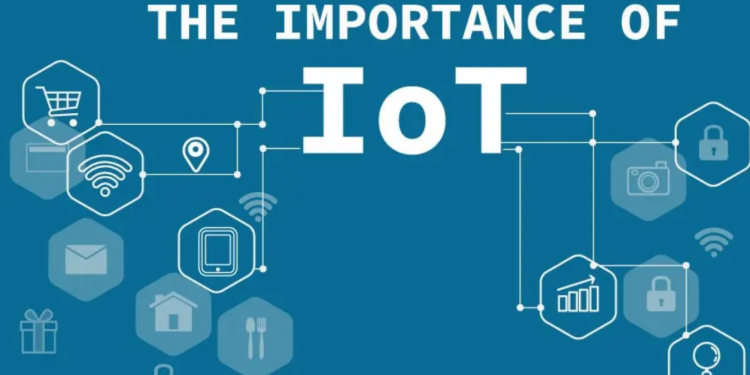The Internet of Things (IoT) refers to the network of physical devices, vehicles, home appliances, and other items that are embedded with sensors, software, and connectivity, enabling them to connect and exchange data. This technology has already begun to impact daily life in a variety of ways, from making homes more efficient to improving public safety.
Why is IoT used?
IoT is used for a variety of reasons, including:
- Automation and Efficiency: IoT enables the automation of various tasks, making them more efficient and cost-effective. For example, smart home devices can turn on lights and adjust the temperature based on the occupant’s preferences, reducing energy consumption and costs.
- Remote Monitoring and Control: IoT enables the monitoring and control of devices remotely, allowing for better management and maintenance of equipment. This can reduce the need for physical inspections and repairs, saving time and money.
- Improved Decision-Making: IoT provides real-time data and analytics, enabling better decision-making and more efficient operations. For example, businesses can monitor supply chain logistics in real-time to improve inventory management and reduce waste.
- Enhanced Customer Experience: IoT can be used to personalize experiences and improve customer satisfaction. For example, retailers can use IoT to offer personalized promotions based on customer preferences and behavior.
- New Business Models: IoT creates new business models by enabling the creation of new products and services. For example, companies can offer subscription-based services for IoT-enabled devices, creating recurring revenue streams.
What are the 7 layers of IoT?
The Internet of Things (IoT) does not have seven distinct layers, as is the case with the Open Systems Interconnection (OSI) model for computer networks. However, there are several commonly recognized layers or components of IoT that are essential to its functionality. These layers include:

- Perception Layer: The perception layer includes sensors and other devices that collect data from the physical world. These devices can be connected to a network, either directly or through a gateway, and can communicate with other devices in the network.
- Network Layer: The network layer is responsible for the transmission of data between devices in the network. This layer includes protocols and technologies for data transfer, such as Wi-Fi, Bluetooth, and cellular networks.
- Middleware Layer: The middleware layer includes software and services that enable communication and data exchange between devices in the network. This layer is responsible for managing data flow and ensuring that devices can communicate with each other.
- Application Layer: The application layer includes software and services that enable end-users to interact with the devices and data in the network. This layer is responsible for data visualization, analytics, and other functions that make the data usable and actionable.
- Business Layer: The business layer includes the systems and processes that enable organizations to create value from the data generated by IoT devices. This layer includes business models, strategies, and processes for data analysis, decision-making, and revenue generation.
- Security Layer: The security layer includes protocols and technologies for securing IoT devices and data. This layer is responsible for protecting against cyber-attacks, data breaches, and other security threats.
- Management Layer: The management layer includes tools and technologies for managing IoT devices and networks. This layer is responsible for device provisioning, monitoring, and maintenance, as well as other aspects of network management.
These layers are not fixed or rigid, and different organizations and industries may have different interpretations or variations of the layers. However, they provide a useful framework for understanding the key components of IoT and how they work together to enable the collection, transmission, and analysis of data from the physical world.
Applications of IoT & its impact on life:
Smart Homes and Home Automation
The IoT has made it possible for homeowners to automate various tasks and monitor their homes remotely. Smart thermostats, for example, can learn a homeowner’s schedule and adjust the temperature accordingly, reducing energy waste and saving money. Smart home security systems can detect unusual activity and notify homeowners of potential threats, providing peace of mind while away from home.
Healthcare and Wearable Devices
The IoT has also made it possible for healthcare professionals to monitor patients remotely and gather real-time data. Wearable devices, such as fitness trackers and heart rate monitors, can track an individual’s health and alert healthcare providers to potential issues before they become serious. In addition, remote patient monitoring can allow individuals to receive care from the comfort of their own homes, reducing hospital stays and costs.
Transportation and Smart Cities
The IoT is also having a significant impact on transportation and smart cities. Smart traffic systems can reduce congestion and improve safety by adjusting traffic flow based on real-time data. Additionally, public transportation can be optimized by monitoring usage and adjusting routes and schedules accordingly. The implementation of smart cities can also improve public safety, reduce energy usage, and provide more efficient services to residents.
Challenges and Concerns
Despite the many benefits of the IoT, there are also concerns about security and privacy. With so many connected devices exchanging data, there is a risk of cyberattacks and breaches. Additionally, the collection and sharing of personal data have raised concerns about privacy and how that data is being used.
Conclusion
The Internet of Things is transforming daily life in countless ways, from making homes more efficient to improving healthcare and transportation. While there are certainly concerns about security and privacy, the benefits of the IoT are significant and will only continue to grow as more devices are connected to the network. As with any new technology, it is important to approach the IoT with caution and awareness of its potential risks and benefits.

